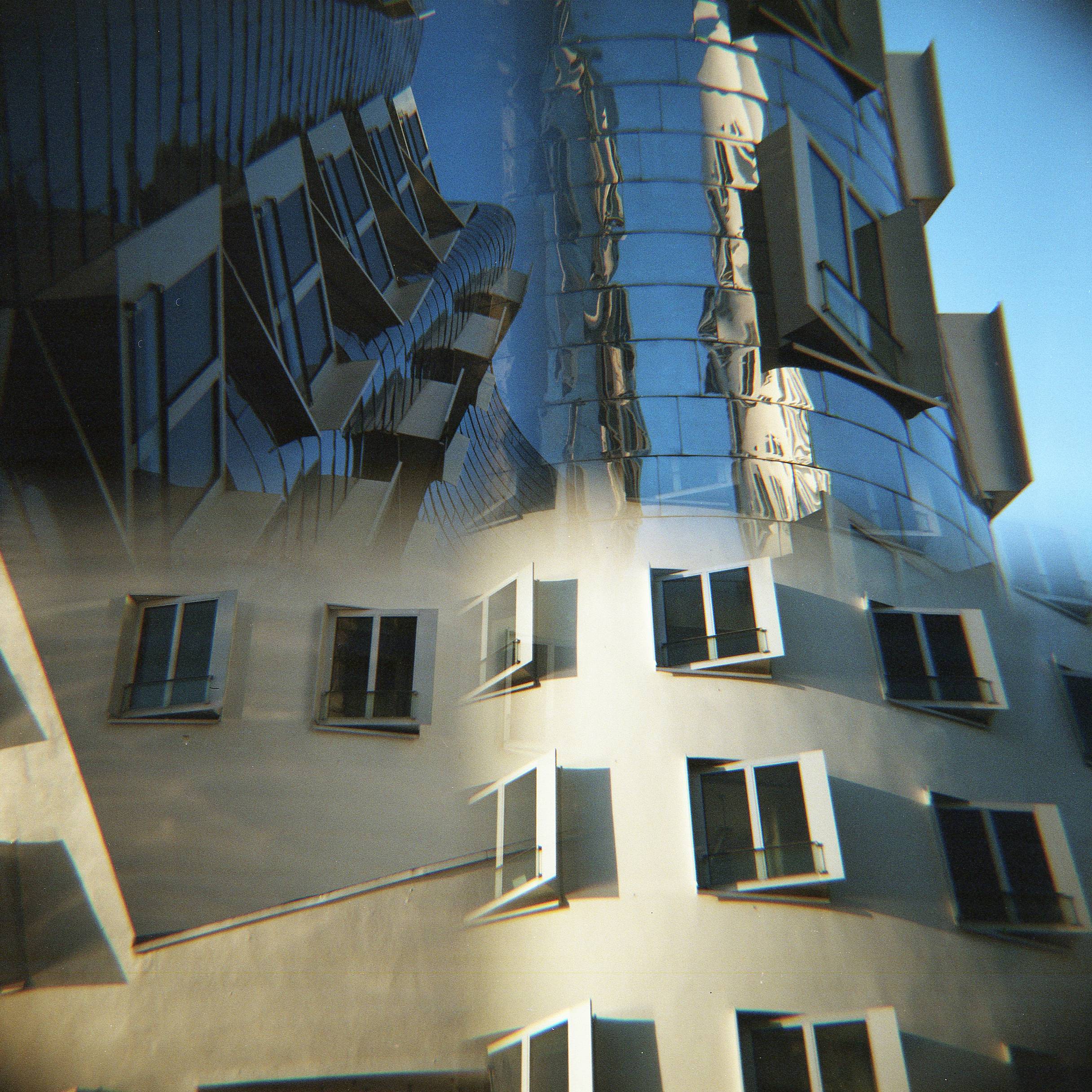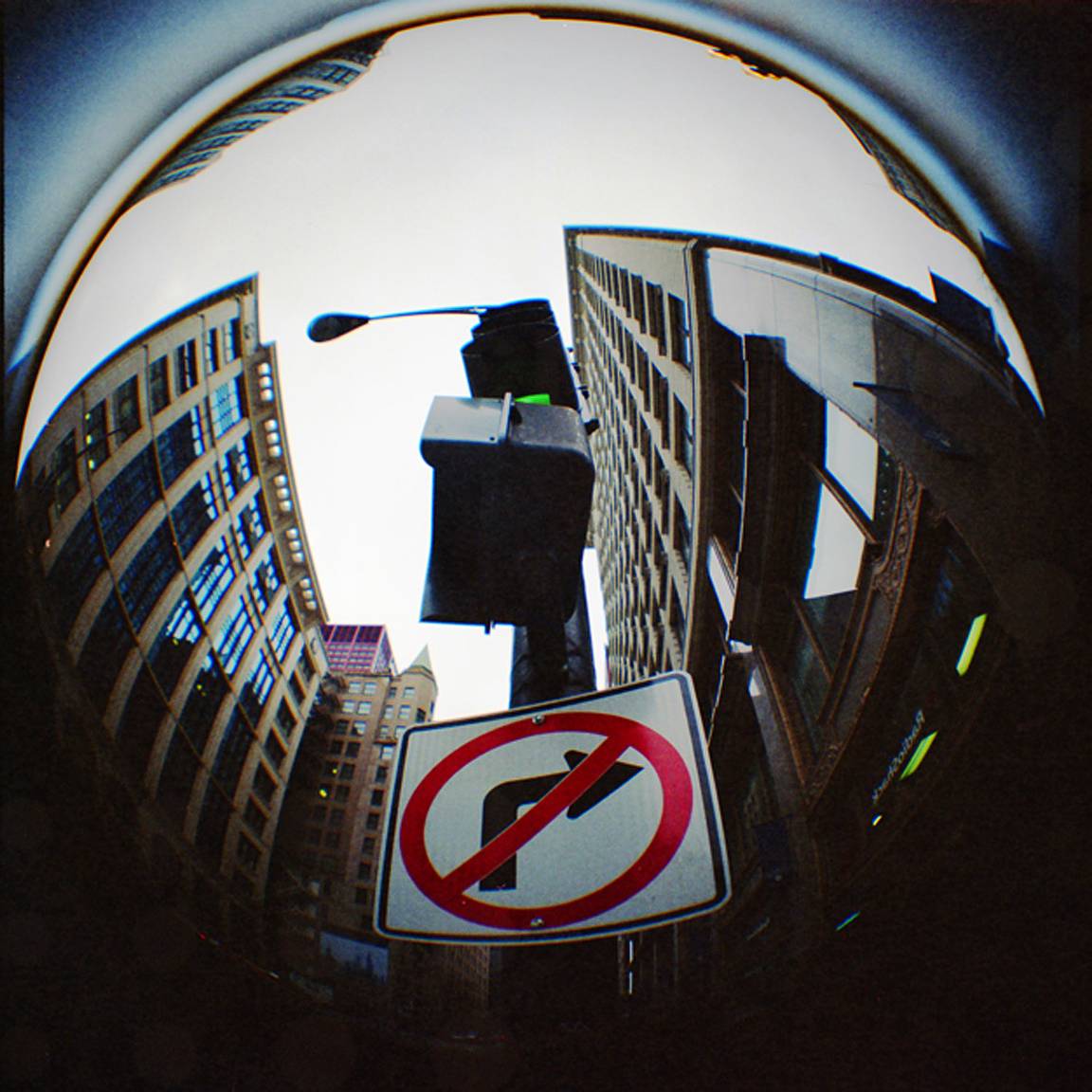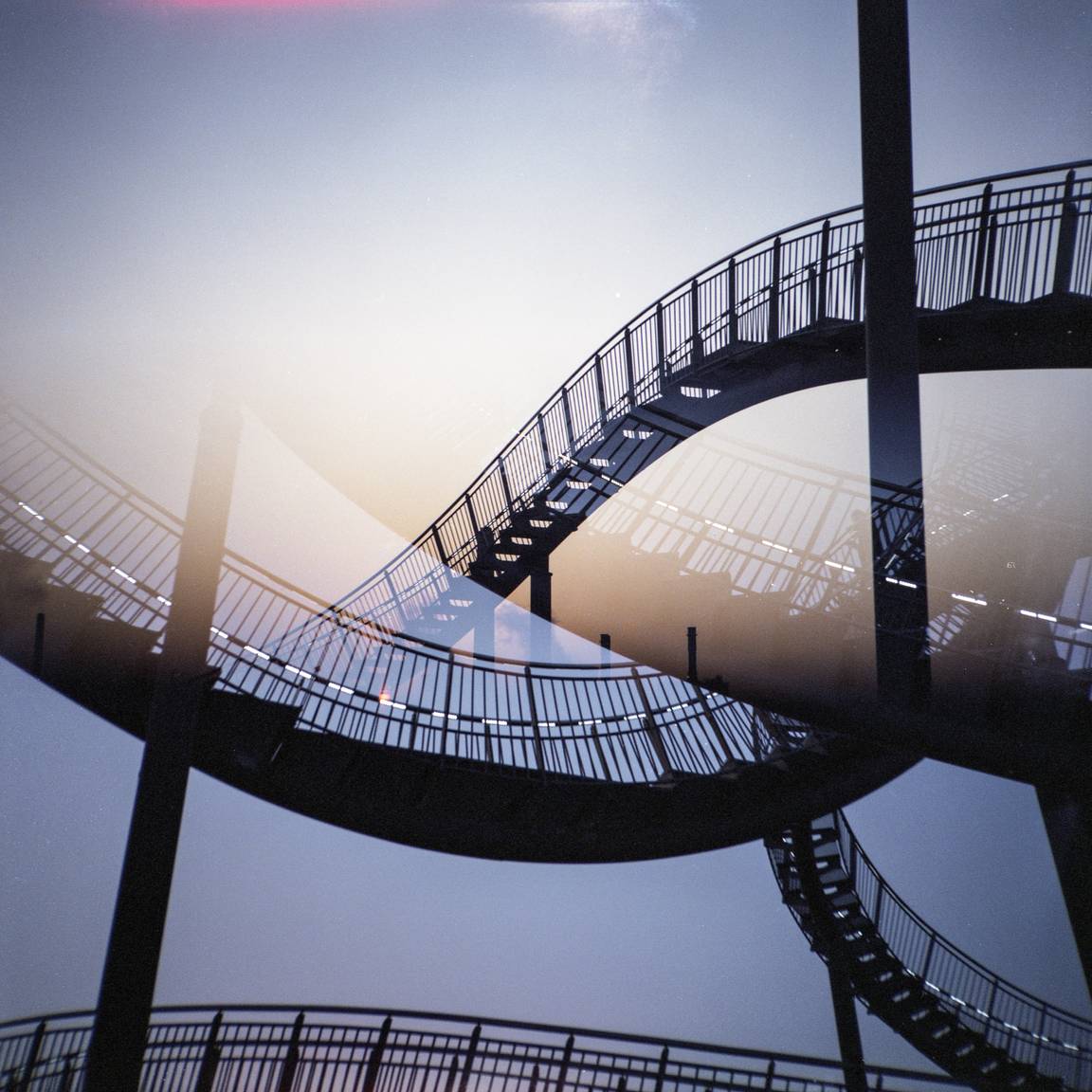The Accidental Tourist: My Diana F+ Story
5 11 Share TweetI enjoy architecture and the large public sculptures we often find in cities. The following tells of my adventures with the Diana F+ from November 2013 onwards. Serendipity plays a part but some planning helps me create unusual images of oft-photographed places.
How I Met Diana
For work I often travel to Germany and Spain, with occasional trips to the USA. When I get some downtime I like to go out and see what’s around me. Photography and geocaching motivate me out to explore new areas.
I got more serious about photography in 2012. I chanced upon Lomography cameras online while looking for inexpensive ways of getting into medium format film. Then I found the Diana F+ in the Chicago Lomography Store, treated her to the 20mm fisheye and the premium 75mm glass lenses, picked up some film and started my adventures in multiple exposures, pinholes and circles.
In downtown Chicago I used Diana F+ to take some shots of city architecture. I also made my first multiple exposures in which I juxtaposed a busker with the tower blocks above him. Then I tried the pinhole option to photograph a famous Chicago sculpture, Anish Kapoor’s Cloud Gate, otherwise known as The Bean. I used the lens cap to manage the start and end of exposure; I had to explain “pinhole” to several people who came and kindly suggested that I remove my lens cap to take pictures!

I returned to the UK and had the films from Chicago developed—my love for the Diana F+ was sealed. In my home village of Brixworth (Northamptonshire, UK) we have an ancient Saxon church which is often photographed, but perhaps not in the same way I did.
Seaside Visit: Staithes, North Yorkshire, UK
The Diana F+ is capable of producing high-quality images. My seaside shots with black and white film and the 75mm premium glass lens are nearly as elegant as those I shoot with a much more expensive film camera (starts with the letter “H”). But with Diana F+, there’s an added mystery; I’m almost always uncertain that I got the focus right until the film is developed.
I have recently added the Diana F+ Splitzer to my kit bag and found new ways of making images. The harbor scene at Staithes takes on a new dimension when shot 50/50 with the Splitzer. This image was made by splitting the frame in half then taking two shots, rotating the camera 180° after the first.
Trainspotting
My Diana F+ and Splitzer made a trainspotting day a photogenic subject. The following images were taken at Grosmont in the UK. I was lucky enough to be in the area for the weekend when the North York Moors Railway held a steam festival.
Pinhole exposures make for some ghostly images, with the added bonus that most of the people watching the trains disappear. The Splitzer allows me to make trains fly or take radical turns. The look of Ilford Pan F suits the historic scene.
Dusseldorf’s Gehry Buildings
Jumping from the UK to Germany, I have made images of the Gehry buildings in Dusseldorf using Fisheye and the Splitzer.
The Fisheye images are conventional, in the way that the 20mm captures are what you’d expect from Diana. With the Splitzer it’s possible to juxtapose one building with another and emphasize the contrasts between the neighboring buildings. Here I used the ½ open aperture but took two exposures. Having imagined the lower and upper sections stacked on top of each other, I aimed low on the first building then high on the second.

Tiger and Turtle
In the Ruhrgebiet industrial area of Germany there are several large-scale sculptures on top of old mining waste mounds. Tiger and Turtle in Duisburg is a sculpture by Heike Mutter and Ulrich Genth. I’d taken some great images in the winter using a DSLR but returned to the site in the spring with Diana and Splitzer to get some multiple exposures. For the first two images, I used the Splitzer with ½ open aperture, rotating the camera 180 degrees and superimposing the same view on the frame.
Here’s an alternative approach on the ½ open aperture: Keep the camera the same way up and superimpose two shots. In the next image there’s a couple admiring the view of the sunset behind the cooling towers and an accompanying view of what they’re looking at.

The light leaks on these Tiger and Turtle images are a result of leaving the exposed film roll sitting on my desk, perhaps a hint that after every adventure we should hurry to fix the results with developer.
Valencia’s City of Arts & Sciences
When working in Spain my base is near Valencia. The city is a photographers’ dream with old and ultramodern architecture, bustling crowds and artistic graffiti in the streets. The City of Arts & Sciences is a place I come back to time and again. Last year I shot scenes here with my Diana F+ using various lenses, the Splitzer and even the 35mm film back. Don’t tell Diana but I also used Belair 6×12 and my DSLR (sometimes with Diana’s lenses) to shoot Valencia.
Trying out Lomography films has also been part of my adventure. I’ve had challenges in getting the perfect exposure with Redscale but do have some interesting images such as Impressions of the Future below. The 35mm example (with the Diana 35mm back) is a more conventional image of the area. With so many available photographs of this area it is hard to find new approaches; the Fisheye shot of the science museum interiors is an attempt at something novel.
The Splitzer gave me the images below. To create the left image, I used the 1/2 open Splitzer aperture, turning the split and the camera through 180° to superimpose two exposures on the frame. To get the abstract on the right I made 4 exposures with the Splitzer set (1/4 open), rotating that opening and the camera 90° with each shot.
I’m really happy with the way Splitzer creates abstracts that challenge the obvious.
written by seangoodhart on 2015-07-09 #gear #ilford #splitzer #review #multiple-exposures #fisheye #diana-f




































5 Comments